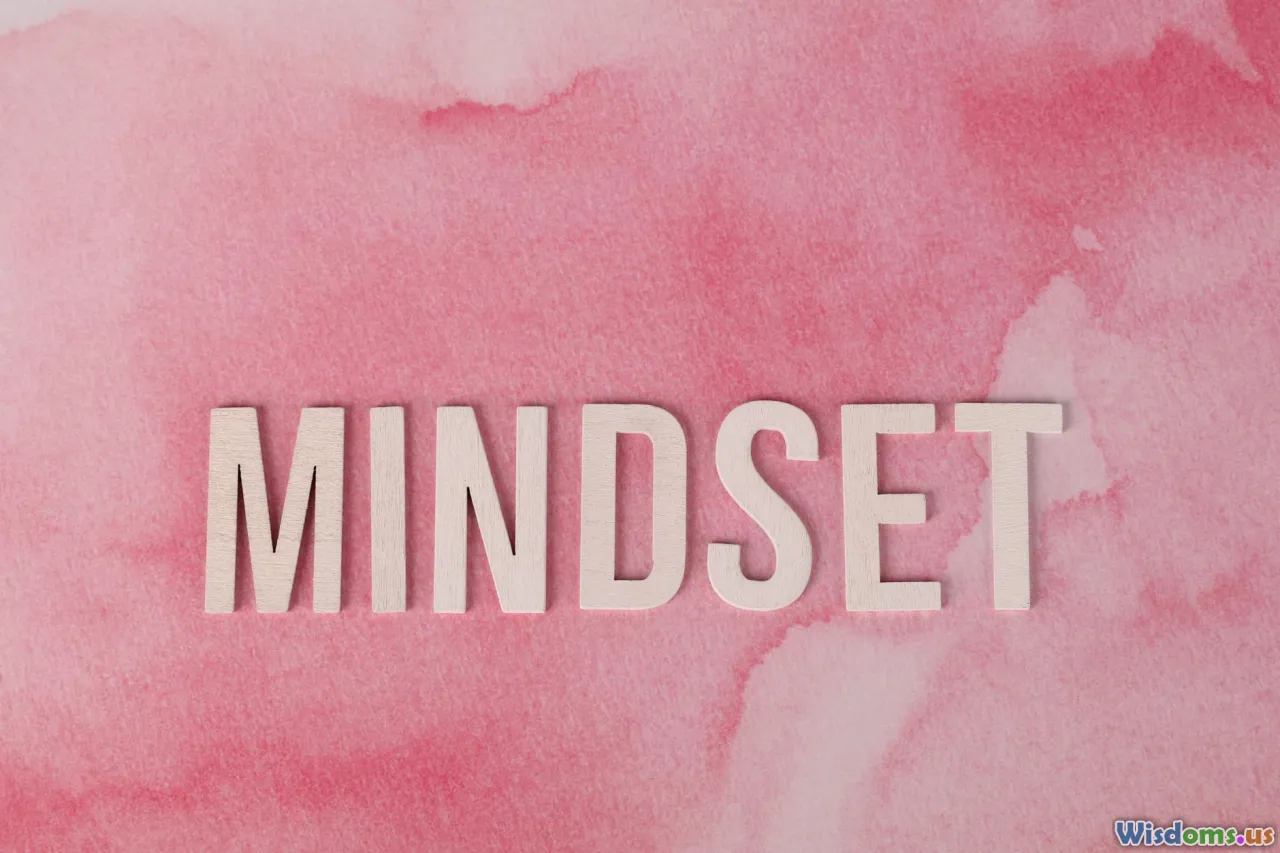
Seven Myths About Mindfulness You Should Stop Believing
13 min read Discover the truth behind common misconceptions about mindfulness and learn how to incorporate it effectively into your life. (0 Reviews)
Seven Myths About Mindfulness You Should Stop Believing
Few topics in mental wellbeing have stirred as much excitement—or confusion—as mindfulness. Once relegated to Eastern spiritual traditions, mindfulness has now become mainstream, embraced by tech giants, Fortune 500 companies, schools, and even national healthcare systems. Yet, the vast adoption has bred misconceptions. What exactly is mindfulness? Can it really eliminate stress or fix all personal woes in minutes a day? Let's unravel seven enduring myths about mindfulness—and uncover what the science and experience truly say.
Mindfulness Is About Emptying the Mind

One of the most pervasive myths is the idea that practicing mindfulness means erasing all thoughts, aiming for a perfectly blank headspace as if thoughts are intruders to banish. In reality, mindfulness does not require nor aim for an empty mind—far from it.
What Mindfulness Actually Is: Mindfulness, as Jon Kabat-Zinn (the founder of Mindfulness-Based Stress Reduction) puts it, is about “paying attention in a particular way: on purpose, in the present moment, and nonjudgmentally.” Practicing mindfulness means becoming aware of thoughts, feelings, bodily sensations, and surroundings––and observing them as they arise, pass, and change.
Example: Imagine you sit down to meditate and quickly realize your head is brimming with to-do lists, worries, or random thoughts. A mindful approach notices these thoughts, gently acknowledges them, and returns attention to the breath or chosen anchor. The goal is not to empty the mind but to change your relationship with its contents.
Takeaway: If your head feels busy, congratulations—you’re human. Mindfulness teaches you to notice, not suppress, your inner experience.
Mindfulness Equals Relaxation or Calmness

Mindfulness and relaxation often get conflated. While mindfulness can lead to calm, it’s not a guaranteed relaxation tool or a quick fix for stress. Its real work is noticing what is, not what you wish were there.
Analysis: Mindfulness is about awareness and acceptance, not necessarily soothing feelings. During practice, you might in fact become more aware of stress or discomfort. Kabat-Zinn’s research found that people who were encouraged to embrace rather than suppress discomforts performed better in stress tasks and long-term emotion regulation.
Case in Point: In mindfulness-based interventions used in clinical psychology for anxiety or depression, the focus is on recognizing feelings without judgment—sometimes discomfort intensifies before subsiding. Over time, this fosters resilience and emotional regulation, not merely tranquility on demand.
Advice: Approach each session with openness rather than expectation. Let go of chasing relaxation and let mindfulness transform how you engage with whatever state arises—whether calm, anxious, or restless.
Mindfulness Is Only for Meditators or Spiritual Seekers

Because mindfulness has roots in Buddhist and other contemplative traditions, people often label it as a niche spiritual pursuit reserved for monks, yogis, or New Age followers. The data, however, tells a far broader story.
Widespread Adoption: Mindfulness-based practices are now standard in contexts as diverse as Wall Street firms, US Marines' training routines, and grade schools. Google offers formal mindfulness training for employees. Medical schools, such as the University of Massachusetts Medical School, incorporate mindfulness into doctor and patient care.
Scientifically Backed: Numerous peer-reviewed studies demonstrate mindfulness-based approaches can:
- Reduce symptoms of depression and anxiety (American Psychological Association, 2012)
- Improve cognitive functioning and working memory (Zeidan et al., 2010)
- Lower chronic pain impact (Chiesa & Serretti, 2011)
Real-World Tip: Whether you’re a coder, nurse, teacher, or parent, mindfulness is an accessible mental technology—applicable wherever awareness and attention matter.
You Need Hours of Practice to Benefit

The notion that mindfulness requires extended silent retreats or dedicating significant chunks of time creates an unnecessary barrier. Research reveals that even short, consistent practice brings measurable benefit.
Key Insight: A pivotal study from Carnegie Mellon University (Creswell et al., 2014) measured biological and psychological markers after just three days of 25-minute mindfulness sessions. Participants experienced reduced perceived stress and lower levels of IL-6, a pro-inflammatory cytokine linked to stress-related illness—even after this brief exposure.
Practical Example: Integrating mindfulness into daily micro-moments—washing your hands, walking to the car, or pausing before answering an email—cultivates the same skills as longer-form meditation. Ten minutes a day is a scientifically supported starting point.
Tip: Rather than believing you “don’t have time,” re-frame everyday activities—like chewing your food slowly or feeling the weight of your phone in your pocket—as invitations to be mindful.
Mindfulness Means Accepting Everything Without Changing Anything

Critics sometimes accuse mindfulness practitioners of being passive—erroneously equating acceptance with resignation. In fact, mindful acceptance empowers intentional, value-driven action.
Analysis: Rather than “grinning and bearing” negative circumstances, mindfulness asks you to engage reality as it is (including discomfort, injustice, or suffering) before making clear, aware choices.
Example in Action: Consider a leader facing tough feedback. Instead of reacting impulsively, a mindfulness practitioner first notices the sting, acknowledges the discomfort, and then chooses a response—perhaps by asking for clarification or strategizing self-improvement.
Clarification: Accepting one’s thoughts and feelings does not mean accepting harmful behavior from others or stagnant conditions. Acceptance is the first step in informed, skillful response—not the last.
Advice: Use mindfulness to discern what can (and cannot) be changed, and act from a place of grounded awareness.
Mindfulness Is About Being Happy All the Time

As wellness content fills Instagram quotes and bestselling books, it’s tempting to see mindfulness as a shortcut to perpetual happiness. But mindfulness is about embracing the full spectrum of emotion—messy, beautiful, difficult, or fleeting.
How-to Approach:
- Notice: When happiness arises, notice and appreciate it fully. When sadness or frustration arrives, observe without resistance.
- Allow: Let each mood, pleasant or unpleasant, register. The aim isn’t to chase positive emotions or plaster over difficult ones—it’s to widen the ability to be present with whatever arises.
Expert Perspective: As Dr. Susan David, psychologist at Harvard Medical School, notes: “Discomfort is the price of admission to a meaningful life.” Mindfulness increases our tolerance for discomfort, and builds the resilience to weather emotional storms without being dominated by them.
Realistic Gain: Over time, mindfulness tends to boost contentment and self-acceptance, but it will not immunize you against difficult human emotions.
Mindfulness Is the Same as Positive Thinking

It’s easy to conflate mindfulness with “just focus on the positive,” as advocated by self-help books and motivational seminars. Mindfulness, however, is fundamentally different from positive thinking.
Comparison:
- Positive Thinking: Encourages replacing negative thoughts or situations with more optimistic ones, sometimes to the point of denial.
- Mindfulness: Teaches you to observe thoughts, be they positive, neutral, or negative, with open curiosity. No thought is amplified or pushed away—they’re all seen as temporary events in consciousness.
Example: Imagine a runner hitting a fitness plateau. A positive-thinking approach might dismiss worry (“I’m always improving!”), but a mindful approach acknowledges frustration, investigates its source, and adjusts training appropriately.
Data Point: Studies (Grossman et al., 2004) show that mindfulness-based approaches lead to reduced rumination and greater emotional clarity, partly because practitioners learn to stay with whatever arises—not just the "good vibes."
Bringing Mindfulness Into Everyday Life

With the myths dispelled, how can you integrate mindfulness meaningfully? Here are practical strategies—no matter your beliefs or schedule:
- Start Simple: Guided breathing meditations (try the UCLA Mindful Awareness podcasts) fit into five-minute breaks.
- Anchor Activity: Choose a regular, everyday action as your mindfulness anchor––brushing your teeth, walking the dog, or waiting in line.
- Work Mindfully: Before meetings, pause to notice your breath, feet on the floor, and body posture for 60 seconds. Set mindful intentions for email or project work.
- Mindful Listening: When in conversation, give full focus to listening—notice urges to interrupt or judge, and return to present engagement.
- Track the Changes: Keep a brief daily log on any shifts in mood, reactivity, or bodily tension, no matter how small. Progress is often gradual but real and cumulative.
Ultimately, mindfulness isn’t a panacea or instant solution, and it certainly isn’t reserved for the few. It offers a new way to relate to the bustle inside your mind and the world beyond—yielding more presence, less suffering, and greater freedom to respond, not just react. Dispelling these myths clears the path for true insight—and for weaving mindfulness through the fabric of day-to-day life.
Rate the Post
User Reviews
Popular Posts



















